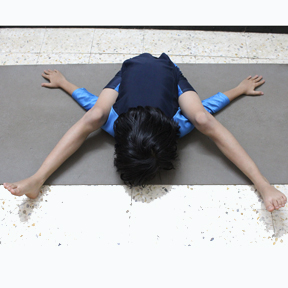Kurmasana
Yoga is for Posers.

Kurmasana (Tortoise Pose) Name: – Kurmasana Meaning: – Turtle or Tortoise Preparatory Poses: – Dandasana (Staff Pose), Adho Mukha Svanasana (Downward facing Dog) Sanskrit: – ???????? -Steps And Benefits In Sanskrit Kurma implies Turtle or Tortoise, in this Asana your body looks similar to tortoise in the final step of this pose on the ground. When we watch a tortoise, we see that just the hands and legs distend out from the shell. In the last position, this asana mirrors the tortoise. Kurmasana tones the whole stomach muscles, evacuates paunch fat and is useful for diabetes. This asana is specified in the Gheranda Samhita, however the prominent adaptation rehearsed today is somewhat unique in relation to what is said in the established content. To perform Kurmasana you have to sits with the legs outstretched, feet as wide separated as could be expected under the circumstances. The knees are twisted marginally, keeping the heels in contact with the floor. The body is inclined forward from the hips and the hands slid under the knees. The body inclines forward (twisting at the hips) to permit the hands and arms to slide sideways and in reverse (under the knees) until the elbows lie close to the back of the knees. The heels are pushed forward and legs fixed however much as could be expected. The brow or button is conveyed to touch the floor. The arms are further taken around the back to interlock the hands under the butts.(If you are attempting this asana first time then don’t interlock your hands, after a 2 or 3 days you can try it. If you are unable to do that then do this asana without interlocking your arms). Steps of Kurmasana (Tortoise Pose) (If you are uncomfortable, then don’t interlock your fingers behind your back, just do this Asana with forward bend with shoulders under your thighs. Once you are comfortable in this then try this asana with interlock fingers behind your back) Variations in Kurmasana Benefits of Kurmasana (Tortoise Pose) Note Don’t try to overstrain your muscles while performing this posture. Breathe in and inhale out the way you would under ordinary circumstances while you are in definite position of this stance. Avoid this Asana in case of any shoulders, hips or arm injury. (Consult a doctor and yoga expert before starting any Asana or Pranayama; don’t go beyond your capabilities during Asana.)